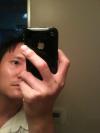

| Visitors Now: | |
| Total Visits: | |
| Total Stories: |

| Story Views | |
| Now: | |
| Last Hour: | |
| Last 24 Hours: | |
| Total: | |
[AP] UN envoy, “JP gov has adopted overly optimistic views of radiation risks”
[AP]
TOKYO (AP) — A United Nations rights investigator said Monday that Japan hasn’t done enough to protect the health of residents and workers affected by the Fukushima nuclear accident.
Anand Grover, U.N. special rapporteur on the right to health, said the government has adopted overly optimistic views of radiation risks and has conducted only limited health checks after the partial meltdowns at several reactors at the Fukushima Dai-ichi nuclear power plant caused by an earthquake and tsunami in 2011.
Several investigations, including one conducted by a parliament-appointed panel, have criticized the government for alleged cover-ups and delays in disclosing key radiation information, causing evacuees to be unnecessarily exposed to radiation. That has also caused deep-rooted public distrust of the government and nuclear industry.
Although he welcomed ongoing health checks of affected residents, Grover said they were too narrow in scope because they are only intended to cover Fukushima’s 2 million people, and that only children are being given thyroid tests, even though the impact of radiation went far beyond Fukushima’s borders. He said the health survey should cover “all radiation-affected zones” stretching across much of the northeastern half of the main Japanese island of Honshu. So far, only one-quarter of Fukushima’s population has been covered.
Many nuclear plant workers on short-term contracts have no access to permanent health checks, and many residents complained that they have not been allowed access to their own health check results, Grover said.
“The scope of the survey is unfortunately narrow as they draw on the limited lessons from the Chernobyl accident and ignore epidemiological studies that point to cancer as well as other diseases in low-dosage radiation,” Grover said. “Chernobyl is not a good example, whose study in the first three years was a blackout. So we don’t have data.”
He said the government’s use of a radiation threshold of 20 millisieverts per year — an annual cap set for nuclear industry workers that is more than 10 times the three-year limit for ordinary citizens — in determining off-limits areas around the plant conveys a misleading message that doses up to that level are safe. The government has emphasized that message by saying in official publications, school booklets and in conferences that there is no clear evidence of a direct risk of cancer if a person is exposed to radiation doses of up to five times that level.
He said in Chernobyl the obligatory resettlement threshold limit was just one-quarter of Japan’s.
2012-11-27 11:30:28
Source:


